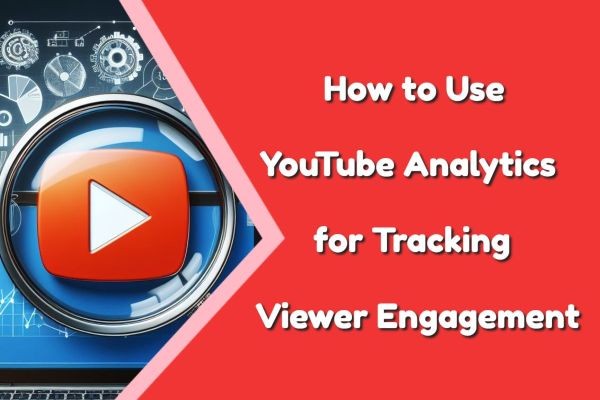In the digital age, where content is king, understanding the intricacies of viewer engagement on platforms like YouTube is paramount for creators aiming to refine their digital strategy and foster growth. YouTube Analytics emerges as a pivotal tool in this endeavor, offering a comprehensive suite of metrics and insights that reveal the nuances of audience behavior and video performance.
Yet, the vast depth of data available can be both a treasure trove and a labyrinth for the uninitiated. As we embark on this exploration, one must consider: what key metrics should be prioritized, and how can these insights translate into actionable strategies for enhanced viewer engagement?
Key Takeaways
- YouTube Analytics is essential for understanding and enhancing viewer engagement through metrics like likes, comments, and watch time.
- Analyzing audience behavior patterns in YouTube Studio can help optimize content for better visibility and engagement.
- Tools like VidIQ and TubeBuddy offer advanced insights for keyword optimization and competitive analysis.
- Implementing data-driven strategies involves monitoring key metrics, utilizing demographics, and conducting A/B testing to refine content.
Understanding YouTube Analytics
Understanding YouTube Analytics is crucial for creators aiming to enhance viewer engagement, as it offers comprehensive insights into audience interactions and content performance. This powerful tool sheds light on the effectiveness of creators' efforts in connecting with their audience by tracking a variety of viewer engagement metrics. These metrics not only include basic indicators of audience appreciation such as likes, comments, and shares but also delve deeper into how content retains viewer attention through average view duration and playback locations.
The significance of YouTube Analytics extends to its ability to unveil patterns in audience behavior, guiding creators in tailoring their content strategy. By analyzing Engagement Reports, creators can gain a nuanced understanding of audience interaction, receiving direct feedback on what resonates with viewers. This feedback loop is essential for refining content themes, enhancing viewer satisfaction, and ultimately, fostering a more engaged and loyal community.
Incorporating these insights into content creation and distribution strategies enables creators to make informed decisions, optimizing their videos to maximize viewer engagement. By closely monitoring comments, likes, and shares, and understanding the nuances of average view duration and playback locations, creators can strategically adapt to meet the evolving preferences of their audience, setting the stage for sustained growth and engagement on the platform.
Key Metrics for Engagement
Analyzing key engagement metrics such as likes, comments, shares, and audience retention rates is essential for creators seeking to deepen their connection with viewers and enhance video performance on YouTube. Through the YouTube Analytics dashboard, creators have access to a suite of tools designed to track and interpret these critical indicators of viewer interest and interaction.
High engagement metrics not only signify a strong connection with the audience but also increase the potential for video virality, making them indispensable for any content strategy. By leveraging insights from YouTube analytics tools, creators can make informed adjustments to their content and presentation styles to boost engagement and watch time.
Key engagement metrics to monitor include:
- Likes: Reflects viewer appreciation and affects the video's visibility.
- Comments: Indicates viewer engagement and provides qualitative feedback.
- Shares: Measures the video's shareability and potential reach beyond the initial audience.
- Audience Retention Rates: Highlights how well the video maintains viewer interest over time.
- Watch Time: An overall performance metric that combines several aspects of viewer engagement.
Understanding and optimizing these engagement metrics can significantly enhance a channel's visibility, audience interaction, and overall performance on YouTube.
Analyzing Audience Behavior
To effectively tailor content and strategies for enhanced viewer engagement, creators must delve into audience behavior metrics such as watch time, views, and interaction levels. Utilizing the YouTube Studio app, YouTube analytics becomes a pivotal tool allowing creators to analyze these metrics in-depth. By understanding how viewers find your videos through various traffic sources, creators can optimize their content to increase visibility and attract a more targeted audience.
Moreover, analyzing audience retention data is crucial for identifying moments when viewers disengage, enabling the adjustment of content to maintain their interest throughout the video. Engagement levels, including likes, comments, and shares, are also vital metrics that offer insights into viewer interaction, indicating the effectiveness of content in sparking conversations and building community.
Additionally, examining audience demographics provides valuable information about the age, gender, location, and device preferences of viewers, guiding content creators in tailoring their videos to meet the needs and preferences of their target audience. Engaging directly with viewers through comments and feedback further bolsters viewer engagement, creating a loyal audience base. Together, these analytics empower creators to enhance their content strategy, potentially increasing their estimated revenue earned through heightened viewer engagement and interaction.
Tools for Advanced Insights
For content creators aiming to refine their YouTube strategy, leveraging advanced analytical tools can provide invaluable insights into viewer engagement and channel performance. These tools offer a variety of features that can help in understanding how videos perform, how they stack up against competitors, and how viewers interact with content. By utilizing these tools, creators can make data-driven decisions to enhance their YouTube presence.
Social Blade: Offers detailed competitor channel analytics, including subscriber growth and video performance comparisons, crucial for competitive benchmarking.
VidIQ: Provides keyword insights, video optimization tools, and comprehensive competitor analysis, aiding in strategic content planning.
Google Analytics Integration: Enables advanced tracking of user behavior, conversions, and traffic sources on YouTube, offering a deeper understanding of audience actions.
TubeBuddy: Features A/B testing, tag suggestions, and productivity tools designed to optimize video performance and facilitate channel growth.
Hootsuite: A YouTube Certified third-party tool that provides comprehensive analytics, scheduling, and performance tracking, supporting strategic growth and viewer engagement.
Implementing Data-Driven Strategies
Having explored the array of advanced tools available for enhancing YouTube channel insights, it is crucial to focus on how to apply this data effectively through the implementation of data-driven strategies. Analyzing audience retention graphs in YouTube Analytics is fundamental. By pinpointing where viewers lose interest, creators can fine-tune content to bolster video engagement.
The Audience tab offers a deep dive into viewer demographics, including age, gender, and location, enabling the development of targeted content strategies that resonate more profoundly with specific viewer segments.
Furthermore, engagement metrics such as likes, comments, and shares, accessible under the Engagement tab, serve as vital indicators of viewer interaction and content performance. These metrics, coupled with click-through rate (CTR) data, provide insights into how compelling your thumbnails and titles are in attracting viewers.
Implementing A/B testing for various video formats or lengths, guided by YouTube Analytics data, allows for an empirical approach to understanding what maximizes viewer engagement. By harnessing these data-driven strategies, creators can make informed decisions to enhance viewer engagement, optimize content, and ultimately achieve greater success on the platform.
Conclusion
In conclusion, YouTube Analytics serves as a pivotal tool for content creators aiming to enhance viewer engagement and channel growth.
By meticulously analyzing key metrics such as watch time, audience retention, and engagement rates, creators can uncover valuable insights into audience behavior.
Furthermore, the utilization of Advanced Mode facilitates a deeper understanding of these metrics, enabling the implementation of data-driven content strategies.
Consequently, mastery of YouTube Analytics is essential for optimizing content and fostering a stronger connection with the audience.









